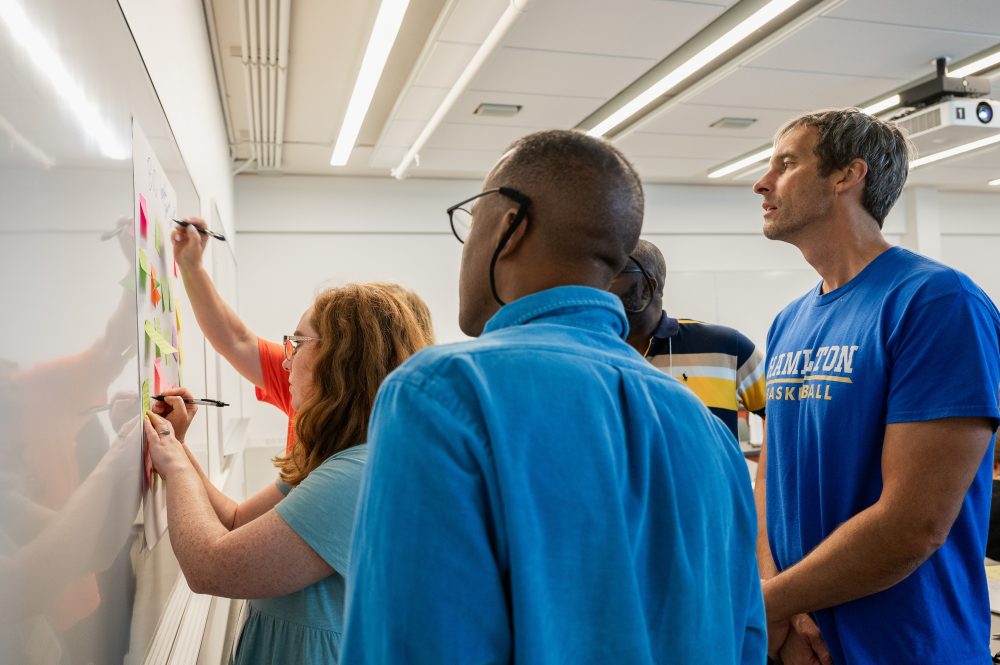What Is the Role of School Leaders in Nurturing Collective Purpose?
Following several disruptive and complex years in education, much has been written about teacher demoralization and threats to the teaching profession. At GOA, this prompted us to emphasize the importance of leaders supporting teacher wellbeing and agency while nurturing their own individual sense of purpose in order to realize both the personal benefits and wider contributions they can make in schools. We have highlighted the purpose-driven work led by school leaders that centers mostly around helping students discover and nurture their own purposes, resulting in Portrait development that guides and enhances teaching and learning in schools.
Fostering collective purpose in schools, however, goes beyond the scope of these efforts - it is ensuring that purpose is made explicit and established as an ongoing part of the work in schools. This positions school leaders as stewards of collective purpose and is critical to the success of a school’s mission, shared values, and most importantly - its people.
Portraits for Collective Purpose
GOA has guided school teams through development of different kinds of school Portraits: Portraits of a Graduate, Portraits of an Educator, Portraits of a Leader. Portraits are visual, memorable, and learner-friendly documents that reflect a school’s public commitment to its learning priorities. The design methodology is grounded in clarifying collective purpose by working as a community to define the learning outcomes that matter to us.
Whether your Portrait defines collective purpose as outcomes for students, teachers, or leaders, the process is as important as the product: designing a Portrait is an inclusive process full of collaboration and visible thinking. It creates time and space for open reflection across a school community: What are our visions for our students and ourselves? What unspoken assumptions do we make about school that we should articulate and evaluate? Are we all working towards the same goals? If so, how do we know? If not, why not?

GOA's Portrait of a School Leader
Collective Purpose Leads to Collective Teacher Efficacy
Schools and communities use Portraits in many ways: to organize programming around relevant skills, to launch a move towards competency-based learning, and to break down silos that prevent collaboration and innovation. Some of the most powerful potential in a Portrait lies in its ability to move schools towards collective teacher efficacy.
Collective teacher efficacy is the shared belief among teachers that the work they are doing has a positive effect on student learning. Research has found its impact ranges from conveying high expectations to students to fostering learner autonomy to trying new teaching approaches based on effective pedagogy. John Hattie makes clear that collective teacher efficacy is the result of an ongoing, rigorous process of feedback loops where teachers implement ideas, collect evidence of impact, then gather to analyze evidence before returning to the classroom to make evidence-based shifts to their practice.

Collective purpose can be the first step towards collective teacher efficacy. In schools where teachers are accustomed to operating individually or in insular silos, a clearly articulated collective purpose in the form of a Portrait creates an opportunity for teachers to gather to discuss and plan for pursuing shared learning outcomes. As education professor Jal Mehta has argued, giving educators time, space, and resources to gather to design and test solutions to common problems is one of the most powerful and effective ways to empower teachers to do their best work.
School Leaders as Stewards of Collective Purpose
Schools are communities of purpose - places where students and their families, teachers, and leaders come together around a set of shared values and aspirational goals. For school leaders, the work of stewarding collective purpose extends beyond articulating a compelling vision and embarking on strategic planning. It involves consistently creating opportunities for members of the community to see their role in that vision and to feel aligned with what comes next. It is an ongoing process of inspiration, communication, collaboration, and intentional action. Those who lead with collective purpose as their guiding compass will find themselves better equipped to navigate the complexities of change.
Ultimately, collective purpose is about empowerment. It’s about helping individuals see how their contributions amplify the school’s mission and strengthen the community as a whole. By investing in that ongoing process and the relationships that strengthen collective purpose, school leaders can build cultures of trust, cultivate belonging, and remain future-focused. In doing so, they prioritize what matters most and create communities where teachers feel valued, students feel inspired, and everyone feels part of something greater than themselves.
For more, see:
GOA is a nonprofit learning organization that reimagines learning to empower students and educators worldwide. In partnership with our global network of 150 schools, we provide interactive, relationship-driven courses, expert resources, and innovative thinking that help to expand and elevate academic programs. Together, we help students and educators become open to the extraordinary.
Follow us on LinkedIn for the latest learning opportunities and news. Sign up for GOA Insights, our newsletter focused on innovative ideas and best practices for the future of learning. Become a Member School.


